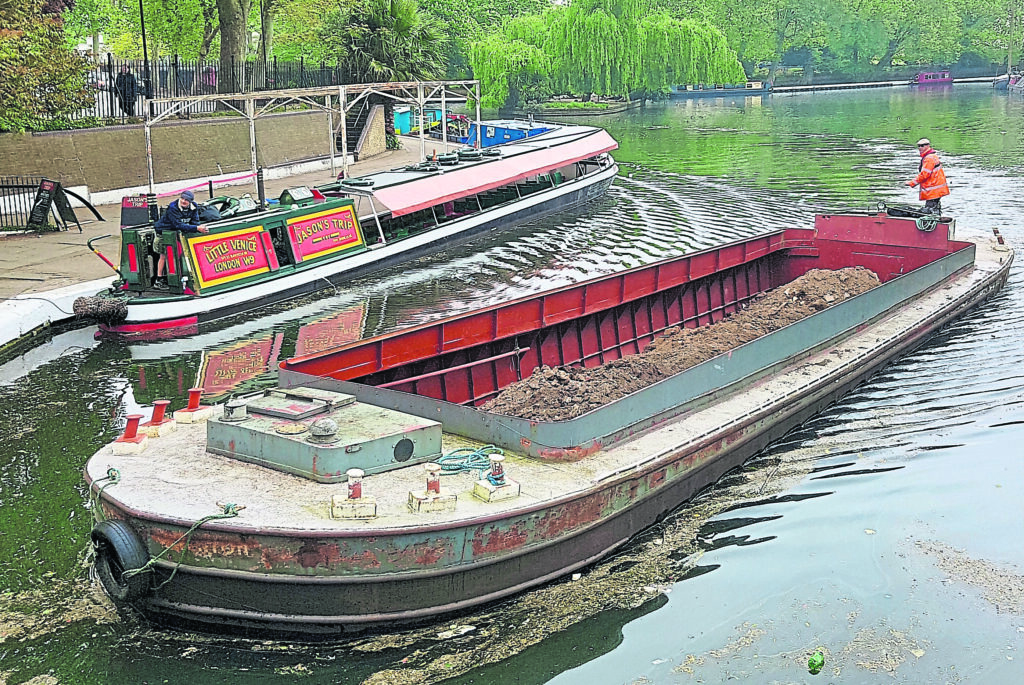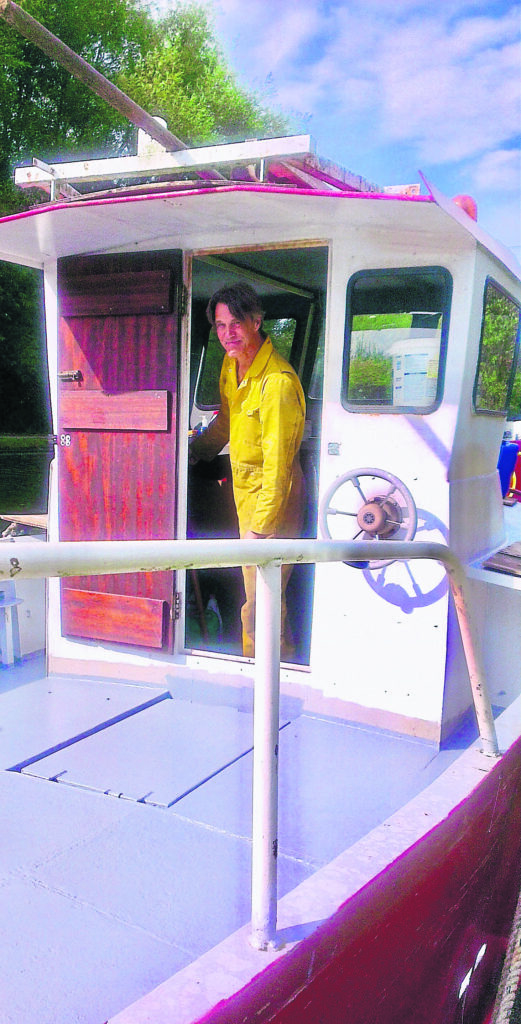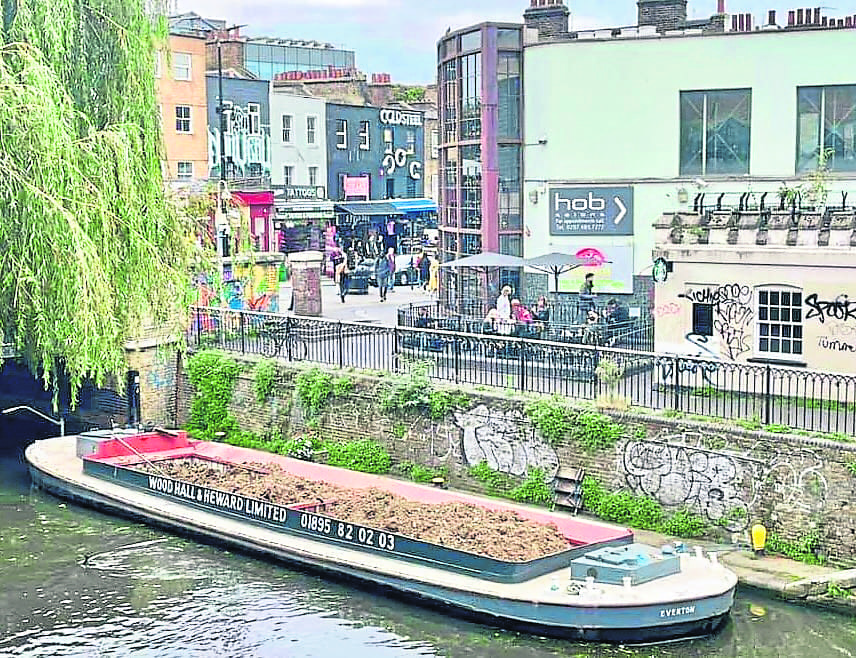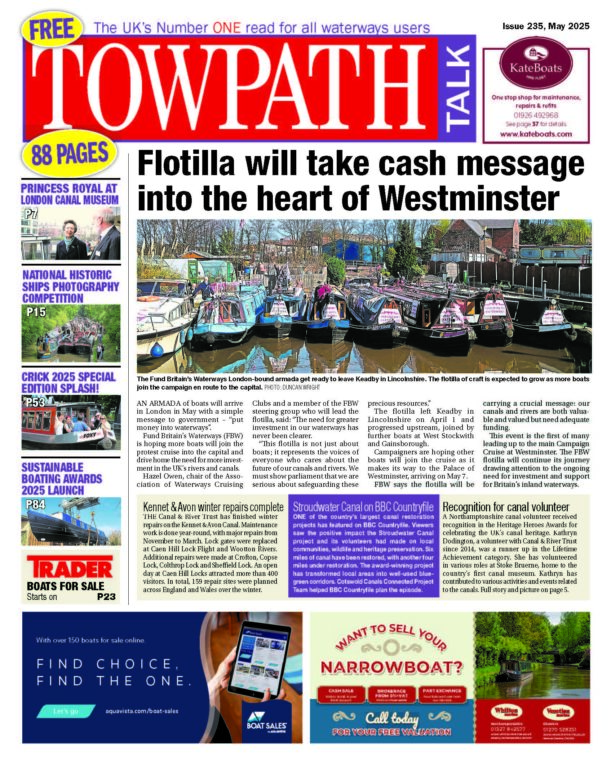Jonathan Mosse reports…
ONCE raised, the two pans – mentioned at the conclusion of last month’s Part 1 introduction to Gerry’s colourful and varied waterways career – were soon mustered behind his girlfriend’s narrowboat that was conveniently passing downstream.
The tow, soon opposite Brentford and the Grand Union, was taken up by a surprisingly co-operative Shetland pony that had the added advantage (and agility) of being able to hop aboard when negotiating towpath obstructions!

Back at the rudimentary base for Gerry’s fledgling company – Springwell Farm, near Harefield – these two craft went on to form the backbone of what might (in its early days) be described as an engineering company, under the name of the Tailored Engineering Partnership, willing to undertake jobs that others (sensibly) passed up!
Included in this category were a mobile 200-seat grandstand for a polo outfit and, inspired by the horse-breaking philosophy of the then famous ‘horse whisperer’, a circular breaking pen that, with flared sides, prevented the rider suffering kneecap injuries.

Ingenuity unquestionably abounded in spades, even if directed away from the waterways. What Gerry described as his ‘brainstorm period’ was clearly not letting up, despite still being tied into academia on a part-time basis as a dissertation supervisor and assignment marker.
By now a limited company, Wood, Hall & Heward (as it had become known) comprised Gerry, Tim Wood – discoverer of the original sunken pans – and Charles Hall, who owned Springwell Farm. It was time to move beyond ‘people turning up with a broken thing’ to something of generally more substance.
Fortunately, this was 1997 and the Fibreway Project was really starting to take off. Tentatively launched in 1994, this was a joint project with British Waterways to lay more than 300 miles of fibre-optic cable in the towpath, in a figure of eight configuration, linking the UK’s major cities with Birmingham at the centre.

Following trials in Scotland, together with a few short runs in the North West and around London, Telewest (a cable TV company) agreed to buy and maintain a national network which is where WHH management saw their break, as conventional equipment was too large and cumbersome to negotiate a towpath.
A crane barge, a tug and four 67ft x 13ft Dutch barges soon joined the fleet, which steadily expanded as a divestment policy was then rife throughout both British Waterways and the Environment Agency. Waterborne equipment was developed, largely thanks to the engineering skills of Tim Wood, upon which to mount winches, handle cable drums, cable ducts and the materials required to build manholes.
When need and time permitted, further vessels were refurbished and modified until the fleet numbered close on 50 craft: some considerable distance travelled from the good offices of Mr Papadopolis, the Greek owner of two sunken flats, who was happy to dispense with them in exchange for their prompt removal!

Another outcome of the passage of time was stricter Health & Safety (H&S) requirements and welfare regulations outlawing the onsite portable toilets in favour of purpose-built welfare cabins that needed to be cleaned, serviced and certificated, requiring their own dedicated barges.
Infrastructure maintenance went on to largely supersede fibre-optic cabling, with barge-mounted HIAB cranes mimicking eight-wheel grab lorries, enabling WHH to handle lock gate replacement and the like. Large data centres started to demand their own independent multiple power supplies so cable laying didn’t altogether go away, while British Gas, National Grid and Thames Water also wanted a look in.
Despite the 2008 crash, construction work is a steady earner with re-cladding a priority following the Grenfell Tower fire and there is still the regular weekly Camden rubbish run featured in the May 2023 issue of Towpath Talk.
WHH was taken over in 2019, leaving the three partners to focus on other things. Gerry has taken on the role of chair of the IWA Freight Group with the stated mission of ‘finding the right set of words that land with the right set of people’ in promoting the environmental benefits of waterway freight.
Now 72 and retired, apart from the odd bit of H&S and consultancy work, one thing that hasn’t gone away is the delightful, 25ft ex-fishing boat, Beatrix, that has been in Gerry’s possession for around 20 years now. The plan was to complete her refurbishment and motor around Britain’s coast, putting into all those wee harbours that one has heard about, but never visited.
So, Gerry, do remember that one should never put off until tomorrow, that which one should be cracking on and doing today…



